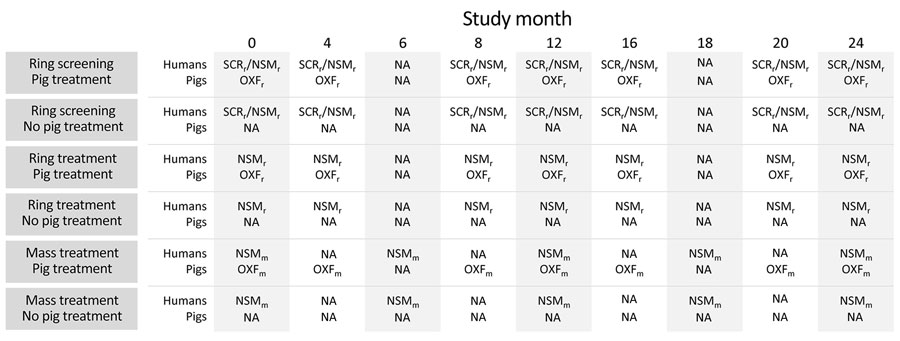Volume 27, Number 9—September 2021
Research
Geographically Targeted Interventions versus Mass Drug Administration to Control Taenia solium Cysticercosis, Peru
Figure 3

Figure 3. Timeline showing interventions in humans and pigs during a study of Taenia solium tapeworms, Peru. NSMm, presumptive treatment with niclosamide for humans; NA, not applicable; NSMr, presumptive treatment with niclosamide for humans only in rings; OXFm, presumptive treatment with oxfendazole for pigs; OXFr, presumptive treatment with oxfendazole for pigs only in rings; SCRr/NSMr, stool screening and treatment with niclosamide for humans with diagnosed taeniasis only in rings.
Page created: June 28, 2021
Page updated: August 17, 2021
Page reviewed: August 17, 2021
The conclusions, findings, and opinions expressed by authors contributing to this journal do not necessarily reflect the official position of the U.S. Department of Health and Human Services, the Public Health Service, the Centers for Disease Control and Prevention, or the authors' affiliated institutions. Use of trade names is for identification only and does not imply endorsement by any of the groups named above.